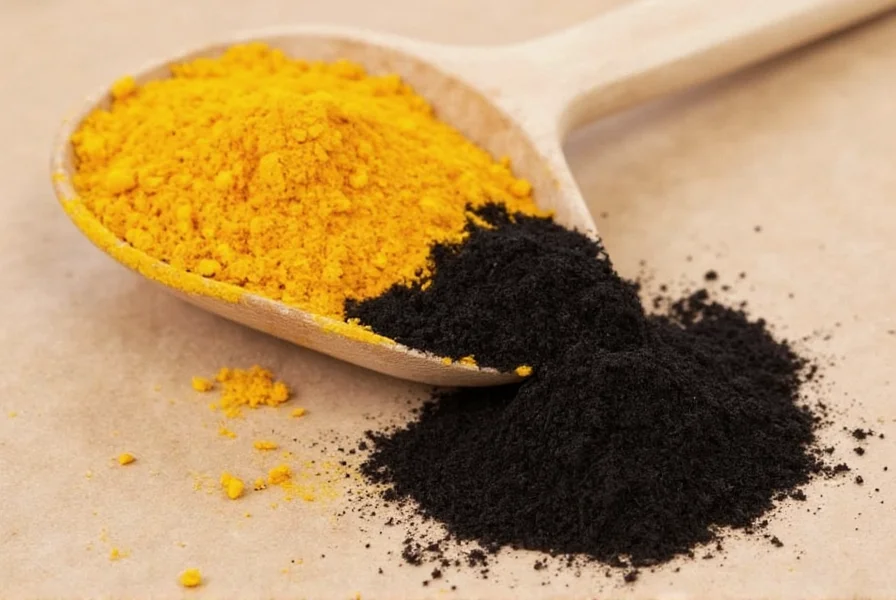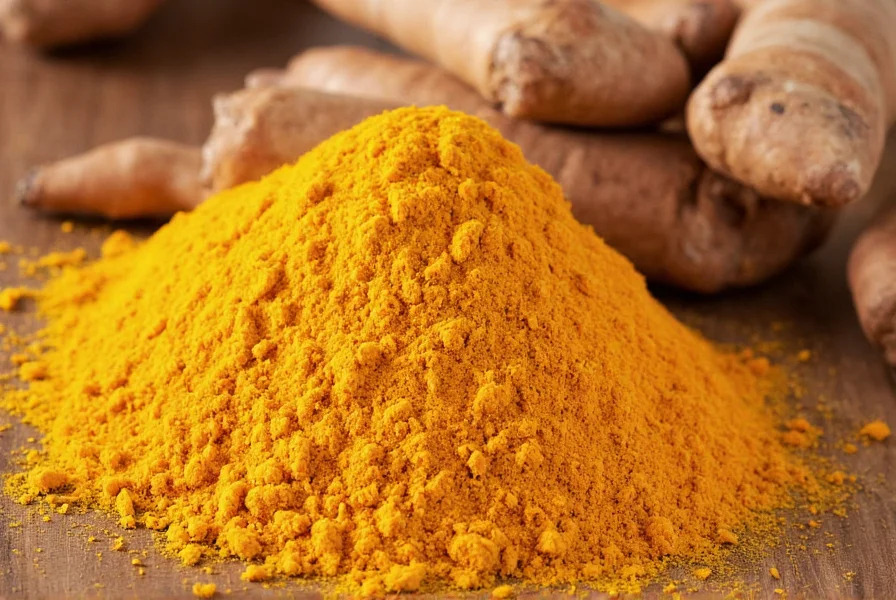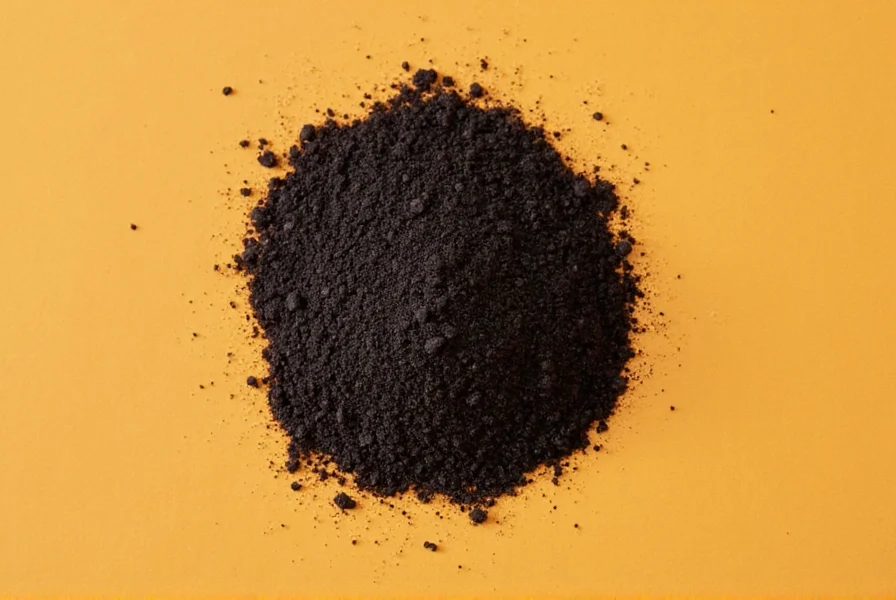When exploring the world of medicinal spices, black turmeric stands apart as a unique botanical treasure. Unlike the familiar yellow turmeric that graces most kitchen shelves, black turmeric (scientifically known as Curcuma caesia) features striking blue-black rhizomes and possesses a distinct chemical profile that has captured the attention of both traditional healers and modern researchers.
What Exactly Is Black Turmeric?
Black turmeric belongs to the Zingiberaceae family, sharing lineage with common turmeric (Curcuma longa), ginger, and cardamom. Native to the northeastern regions of India and parts of Southeast Asia, this perennial herb grows to about 60-90 cm in height and produces distinctive purple flowers. The most remarkable feature is its rhizome, which ranges from deep blue to almost black when cut open—hence the name.
Traditional names for black turmeric vary across cultures: Kaladi in Ayurveda, Kali Haldi in Hindi, and Kanji in some Southeast Asian traditions. These names often reference its dark coloration and distinguish it from the more common Curcuma longa.

Chemical Composition: How Black Turmeric Differs
The chemical profile of black turmeric reveals significant differences from its yellow counterpart. While both contain curcuminoids, black turmeric typically contains:
- Higher concentrations of curcumin (up to 4-6% compared to 2-3% in yellow turmeric)
- Unique compounds like curcumenol and curdione not found in significant quantities in yellow turmeric
- Different ratios of essential oils including ar-turmerone
- Distinctive anthocyanin pigments contributing to its blue-black color
| Compound | Black Turmeric (Curcuma caesia) | Yellow Turmeric (Curcuma longa) |
|---|---|---|
| Curcumin content | 4-6% | 2-3% |
| Essential oil content | 3-5% | 3-7% |
| Unique compounds | Curcumenol, curdione | Ar-turmerone dominant |
| Rhizome color | Blue-black | Orange-yellow |
Traditional Medicinal Applications
For centuries, traditional medicine systems across India and Southeast Asia have utilized black turmeric for various health purposes. Ayurvedic practitioners have documented its use for:
- Respiratory conditions including asthma and bronchitis
- Skin disorders such as eczema and psoriasis
- Wound healing and reducing inflammation
- Neurological support and cognitive function
- Digestive health and liver support
Traditional preparation methods often involve grinding the fresh rhizome into a paste, sometimes combined with other herbs, for topical application or internal consumption in small quantities.
Scientific Research on Black Turmeric Benefits
Modern scientific research has begun validating many traditional claims about black turmeric. Recent studies have investigated:
Anti-inflammatory Properties
Research published in the Journal of Ethnopharmacology (2023) demonstrated that black turmeric extracts showed significantly stronger inhibition of inflammatory markers like COX-2 and TNF-α compared to standard yellow turmeric extracts, suggesting potential applications for inflammatory conditions.
Neuroprotective Effects
A 2022 study in Phytomedicine found that compounds unique to black turmeric demonstrated promising neuroprotective effects in laboratory models, potentially offering benefits for cognitive health and neurodegenerative conditions. The research noted enhanced blood-brain barrier penetration compared to standard curcumin.
Antioxidant Capacity
Analysis in the International Journal of Food Science (2024) revealed that black turmeric possesses approximately 30% higher antioxidant capacity than yellow turmeric, attributed to its unique combination of curcuminoids and anthocyanins.
Black Turmeric vs. Yellow Turmeric: Practical Differences
Understanding the practical differences between these two varieties helps determine appropriate usage:
- Culinary use: Black turmeric has a more pungent, slightly bitter taste compared to yellow turmeric, making it less common in everyday cooking but valued in specific traditional dishes
- Color impact: Black turmeric can impart a blue-gray tint to foods rather than the yellow hue of common turmeric
- Availability: Black turmeric remains significantly less available commercially than yellow turmeric
- Preparation: Traditional preparations often call for smaller quantities of black turmeric due to its stronger potency
How to Use Black Turmeric Safely
When incorporating black turmeric into your wellness routine, consider these practical guidelines:
- Start with small amounts to assess tolerance (1/4 to 1/2 teaspoon of powder daily)
- Combine with black pepper (piperine) to enhance absorption, as with yellow turmeric
- Consider taking with healthy fats to improve bioavailability of curcuminoids
- Consult with a healthcare provider before use if you have gallbladder issues or are taking blood thinners
- Discontinue use if experiencing digestive discomfort or allergic reactions
Sourcing Authentic Black Turmeric
Finding genuine black turmeric requires careful selection due to its relative rarity:
- Look for products specifically labeled Curcuma caesia rather than generic "black turmeric" claims
- Reputable herbal suppliers specializing in Ayurvedic or traditional botanicals are more likely to carry authentic products
- Fresh rhizomes should display the characteristic blue-black interior when cut
- Powdered forms may appear grayish-blue rather than yellow-orange
- Be wary of products priced similarly to yellow turmeric, as authentic black turmeric commands a premium

Current Research Limitations and Future Directions
While promising, research on black turmeric remains in relatively early stages compared to yellow turmeric. Most studies have been conducted in laboratory settings or with animal models, with limited human clinical trials. Future research directions include:
- Standardized extraction methods to preserve unique compounds
- Human clinical trials for specific health conditions
- Comparative bioavailability studies between black and yellow turmeric
- Sustainable cultivation practices to increase availability
Conclusion: The Unique Value of Black Turmeric
Black turmeric represents a distinctive botanical with unique properties that differentiate it from common yellow turmeric. Its higher curcumin content, unique chemical profile, and traditional medicinal applications make it a valuable subject of both traditional wisdom and modern scientific inquiry. While not a replacement for yellow turmeric in culinary applications, black turmeric offers specialized potential for targeted wellness approaches when used appropriately and sourced authentically.
Frequently Asked Questions
Is black turmeric the same as regular turmeric?
No, black turmeric (Curcuma caesia) is a distinct species from regular yellow turmeric (Curcuma longa). They differ in appearance (blue-black vs. orange-yellow rhizomes), chemical composition (higher curcumin content and unique compounds in black turmeric), and traditional uses. While related botanically, they are separate varieties with different properties.
What are the main health benefits of black turmeric?
Research suggests black turmeric may offer enhanced anti-inflammatory effects, stronger antioxidant capacity (approximately 30% higher than yellow turmeric), and potential neuroprotective benefits due to its unique chemical profile. Traditional uses include supporting respiratory health, skin conditions, and wound healing, though more human clinical studies are needed to confirm these benefits.
Can I substitute black turmeric for yellow turmeric in recipes?
While possible, substitution isn't recommended for most culinary applications. Black turmeric has a more pungent, slightly bitter taste and can impart a blue-gray color rather than yellow. It's traditionally used in smaller quantities due to its stronger potency. For medicinal purposes, they serve different functions based on their distinct chemical profiles.
Where can I find authentic black turmeric?
Authentic black turmeric (Curcuma caesia) is less common than yellow turmeric. Look for specialized herbal suppliers, Ayurvedic medicine practitioners, or botanical retailers who specifically label the product as Curcuma caesia. Fresh rhizomes should show blue-black interior when cut, while powder should have a grayish-blue hue rather than yellow.
Are there any safety concerns with black turmeric?
Black turmeric is generally considered safe when used appropriately, but may cause digestive upset in sensitive individuals. Those with gallbladder issues or taking blood thinners should consult a healthcare provider before use. As with any supplement, start with small amounts to assess tolerance, and discontinue use if adverse reactions occur.











 浙公网安备
33010002000092号
浙公网安备
33010002000092号 浙B2-20120091-4
浙B2-20120091-4